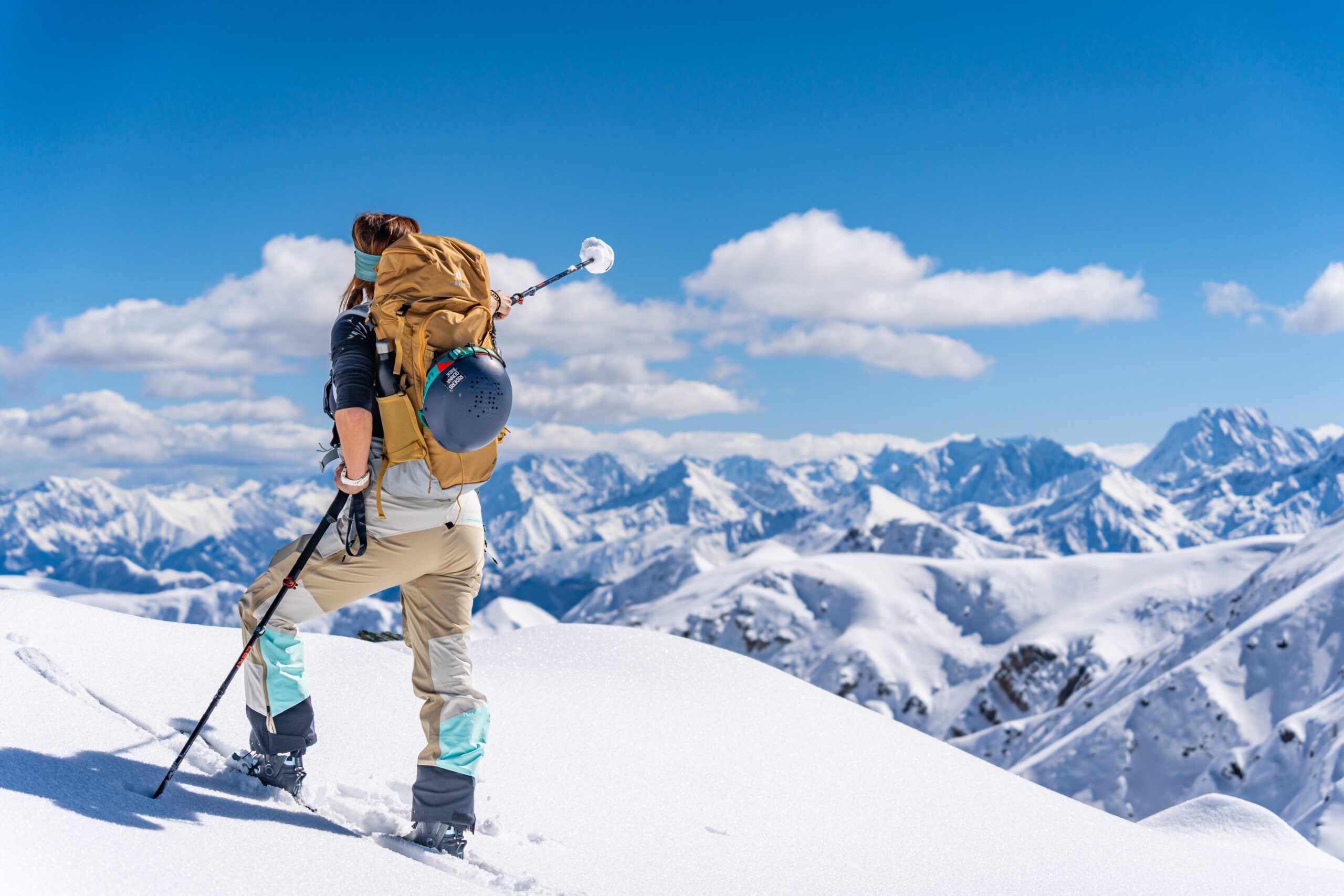Spring skiing isn’t just winter with better lighting. It’s a season of change, warm sun, soft turns… Ever gone from carving buttery corn to slogging through heavy slush in the same run? You know the drill.
We believe those late-season laps deserve just as much love as mid-winter pow days. You’re out there for the last runs, and we’re here to help you nail them. So here’s a complete guide to help you understand what’s happening beneath your skis, protect your gear (and your skin), and most importantly, staying safe while you’re at it.
What’s Really Going On With Spring Snow?
Spring snow is alive. It shifts constantly, firm in the morning, perfect corn mid-day, maybe slush by afternoon.
You’re skiing on melted and refrozen winter snow. Warmer daytime softens the snow, then cooler nights lock it back into place. This melt-freeze cycle creates a mix of snow types that demand different skills and timing.
Here’s a quick cheat sheet:
| Snow Type | What It Feels Like | Best Time to Ski It | What to Watch Out For |
| Corn Snow | Smooth, “buttery”, great grip | Mid-morning (after it softens slightly) | Can get slushy or icy later |
| Slush | Wet, heavy, can feel sticky | Late morning/afternoon | Slows you down, tiring, can refreeze |
| Firm/Icy | Hard, slick, less edge control | Early morning | Reduced grip, higher fall risk |
Why Your Winter Ski Habits Might Not Work
Instead of relying on forceful turns, spring skiing often requires a lighter touch and more subtle weight shifts to navigate the softening snow. Letting go of those ingrained winter habits and embracing a more fluid, adaptable approach will be key to enjoying the unique challenges and rewards of spring skiing
Spring Safety Essentials
You’re still skiing, but it’s a whole new environment. Between sun exposure, fast-changing conditions, and different snow textures, spring demands a few extra safety checks.
-
- Sun Protection: Reapply often SPF 40+ sunscreen especially around your nose, cheeks, and under your goggles, protect your eyes with UV-rated goggles, and don’t forget the lip balm.
- Hydration: Dehydration sneaks up fast in warm air and altitude. Bring water, more than you think you need.
- Layered Clothing: Start with a moisture-wicking base layer, add a light insulating mid, and finish with a breathable shell, don’t forget that stashing a thin layer in your pack makes adjusting mid-day easy.
- Helmet: Always wear a helmet, your brain’s worth protecting every day of the season.
- Timing: Start mid-morning once the sun softens the snow. Follow the sun across aspects, east-facing slopes warm up first, west-facing hold snow longer.
- Warm-Weather Wax: Use warm-temp wax to help your skis glide in slushy or wet snow. A simple rub-on wax in your pack can save a slow day.
- Awareness: Watch for changing conditions, exposed rocks, and tree wells especially near edges and glades.
- Buddy System: Variable conditions increase risk. It’s always smart to ride with someone, and if you’re venturing out of bounds, be avalanche-aware and gear up.
- Respect Signs: Pay attention to and respect all posted signs.

Credit: Jörg Salzer
How to Adjust Your Technique for Spring Snow
Spring snow doesn’t play by the rules. One minute you’re cruising on corn, the next you’re slogging through knee-deep slush or skittering over icy patches. Adapting your skiing and your mindset is key to staying in control and having fun.
1. Maintain Balance
Spring snow is inconsistent, so your stance needs to be rock-solid and adaptable.
- Stay centered over your skis, not leaning too far forward or back.
- Bend your knees and keep your weight fluid to absorb all those weird snow textures.
- In heavy slush, try to stay light on your feet, don’t fight the snow, flow with it.
OGSO skis are designed with a high, extended nose and straight-line profile that naturally help you stay centered and balanced. That means less leg fatigue, more edge control, and smoother skiing, even when conditions shift mid-run. Want to see what we mean? Explore our Neoteric collection.
2. Adjust Turns and Speed
- In slush: Maintain a little more speed to glide over sticky patches. Think smoother, surfier turns.
- In corn: Enjoy it! Corn offers great grip for carving, especially mid-morning.
- In icy patches: Short, controlled turns with sharp edges are your friend. Trust your technique.
Tip: Think of your day like a wave, the sweet spot comes mid-morning, so don’t burn energy battling bulletproof slopes too early.
3. Specific Techniques for Slush and Corn
Each type of spring snow demands a slightly different rhythm:
| Snow Type | What to Do |
| Slush |
Keep weight evenly distributed. A wider stance adds stability. “Snake” your way down with slow, flowing turns. |
| Corn | Enjoy the edge hold! Slightly wider stance for control, and lean into those carved turns. |
| Wet & Heavy | Let your bases skim the surface, less edging, more gliding. Use mellow terrain to your advantage and go surfy. |
Why It’s Worth It
Sure, the powder’s long gone. But there’s something magic about spring skiing. The mountains are quieter. The sun feels good on your face. And when you hit that perfect strip of corn snow? It’s pure joy.
You don’t have to give up speed or safety to enjoy it. With the right timing, gear, and mindset, spring skiing can be just as thrilling, maybe even more than mid-winter.
At OGSO, we’re here to help you ski smart, stay safe, and squeeze the most fun out of every season.
